Lessons From Cool Cats: From Creative to Business and Beyond
Do you have a Web3 business idea that relies on community to succeed? Want to find out how a successful NFT project got off the ground and what they learned?
In this article, you’ll discover how Cool Cats launched and what you can learn from their breakout success.
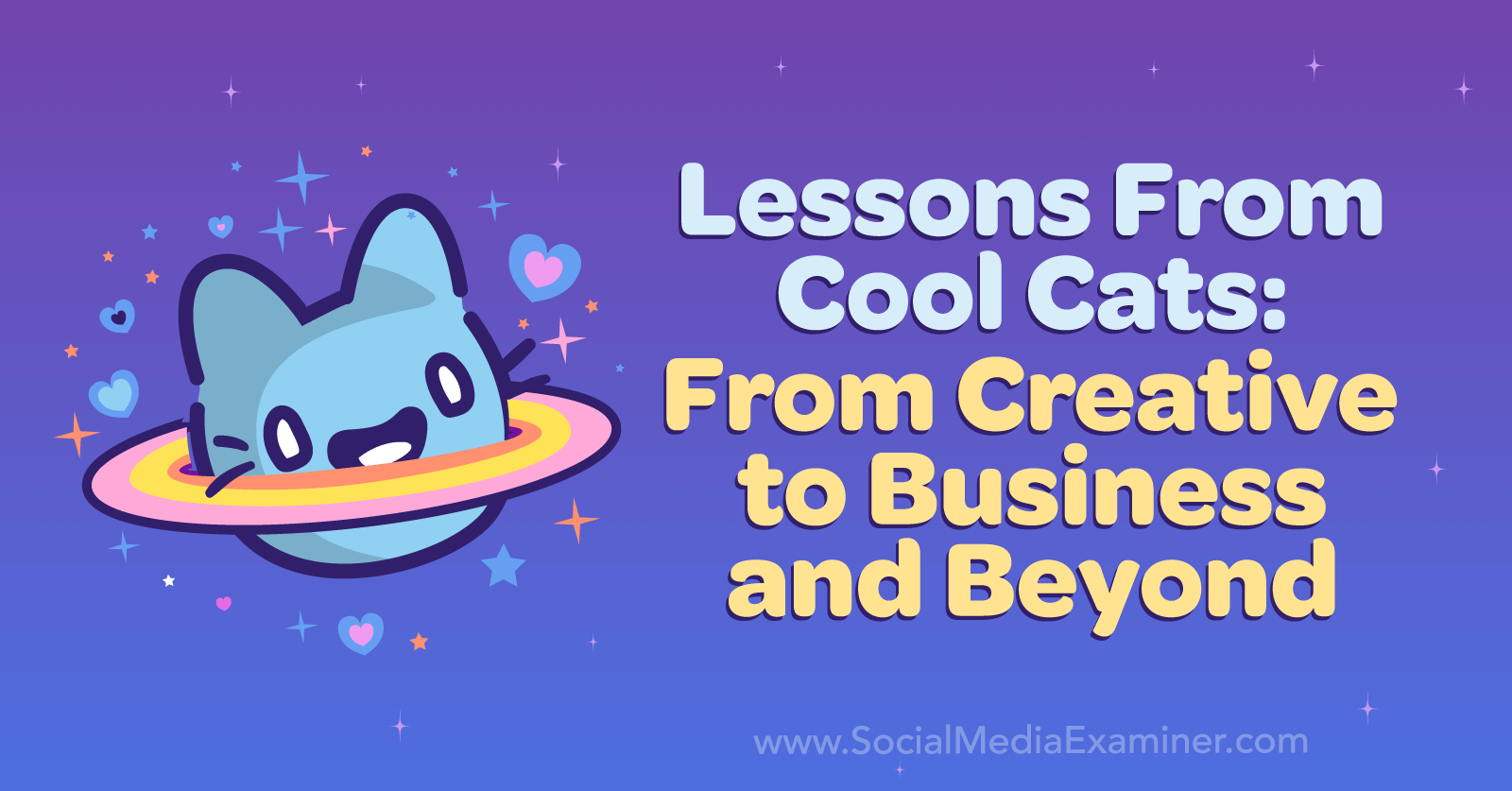
How the Cool Cats NFT Project Developed
In 2021, Evan Luza was working as Senior Brand Designer for Megaport when he noticed a lot of chatter about Bored Apes on Twitter.
He'd been in the crypto space since 2017, and while he didn't fully understand why everyone was freaking out about illustrations of monkeys, something about them reminded him of a childhood spent collecting and trading Yu-Gi_Oh! And Pokemon cards.
Being an entrepreneur with a background in design and a basic understanding of the underlying tech, he decided to launch an NFT collection featuring anthropomorphized kawaii-style sushi characters.
He began working with a pixel artist, registered an account on Twitter, and began scaling the brand. He also reached out to Clon (Colin Egan), a friend from design school, for some help with motion graphics to promote the collection. After explaining crypto, blockchain, and tokens to Clon, the two partnered to launch the collection together.
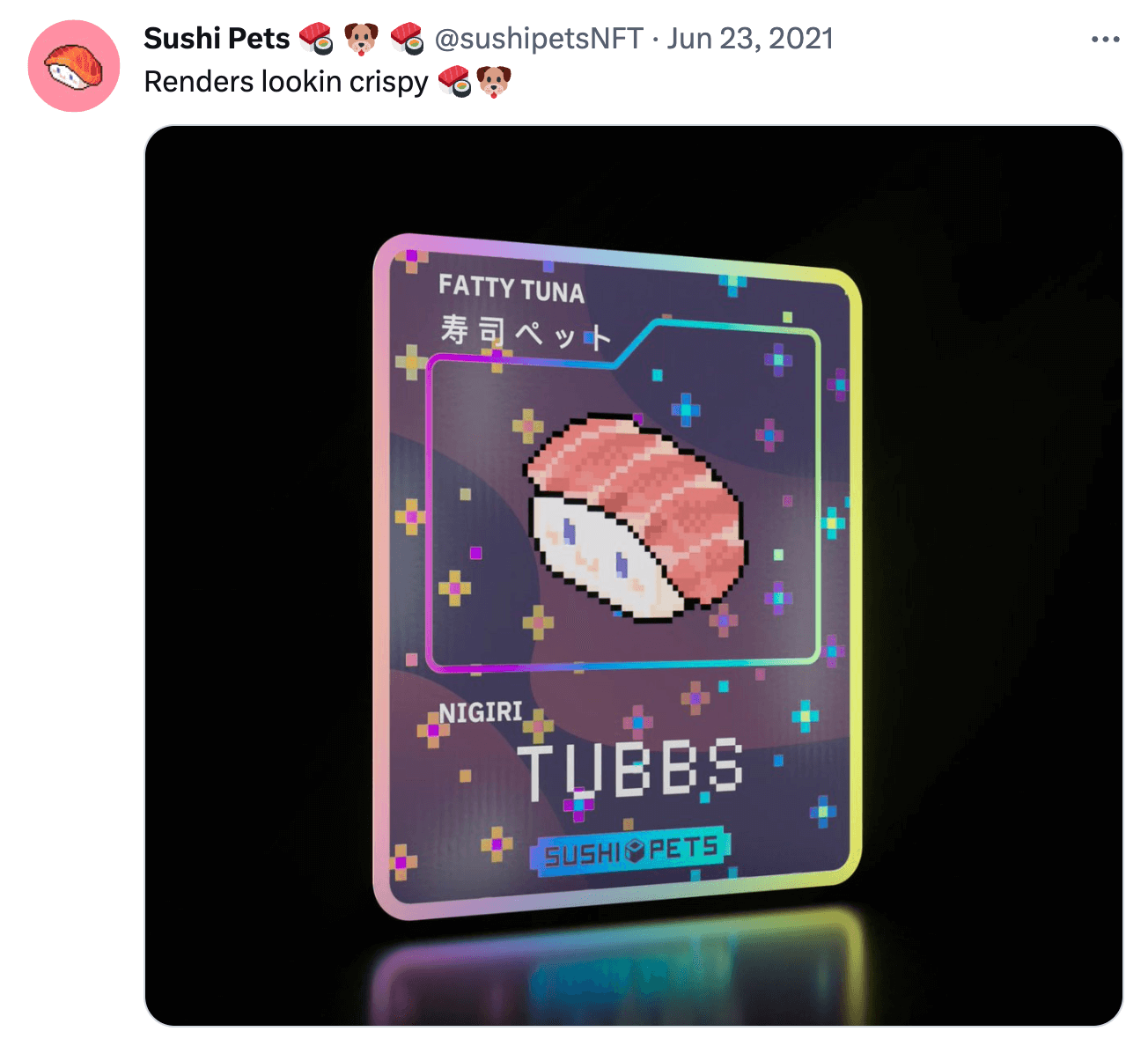
The project was 90% complete. The last piece was a solidity developer to create and deploy the smart contract. However, in 2021, solidity developers were few and far between. After a fruitless search, they finally found a dev through a friend of a friend and felt they were on their way.
Unfortunately, the dev left to work on a different project before completing his work.
That's when Clon saw Faticorns. The duo approached the devs— Tom Williamson and Rob Meyhew, aka Lynk, about helping to bring the sushi pets project to mint. Soon after, sushi pets was put on ice, and the four became equal partners in developing and launching an entirely new collection based on a character Clon had been working on for years: Blue Cat.
Clon worked on the artwork, Tom worked on the smart contract and solidity, Lynk worked on the website, and Evan worked on marketing and branding.
The Cool Cats NFT Launch
The Cool Cats NFT project launched as a collection of 9,999 NFTs in July 2021 with an initial mint price of 0.6ETH.
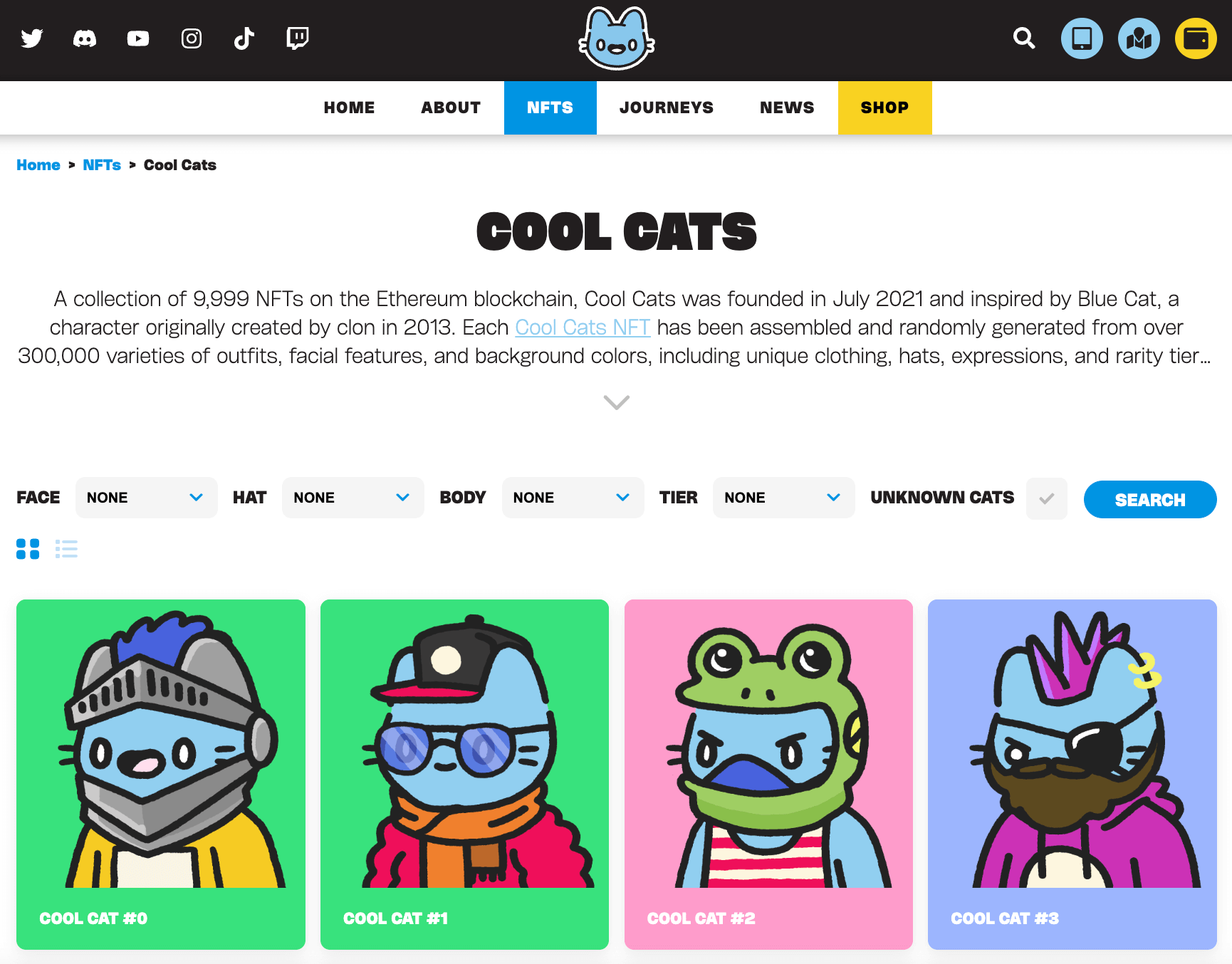
After minting a few hundred Cool Cats at 0.6ETH, the team decided to lower the mint price to 0.25ETH, and the collection sold out in approximately 6 hours.
While the euphoria of minting out was high, it came with work – everyone who had minted at 0.6ETH had to be made whole. The team put much effort into tracking wallets and dropping additional cats to the initial holders who minted at 0.6ETH.
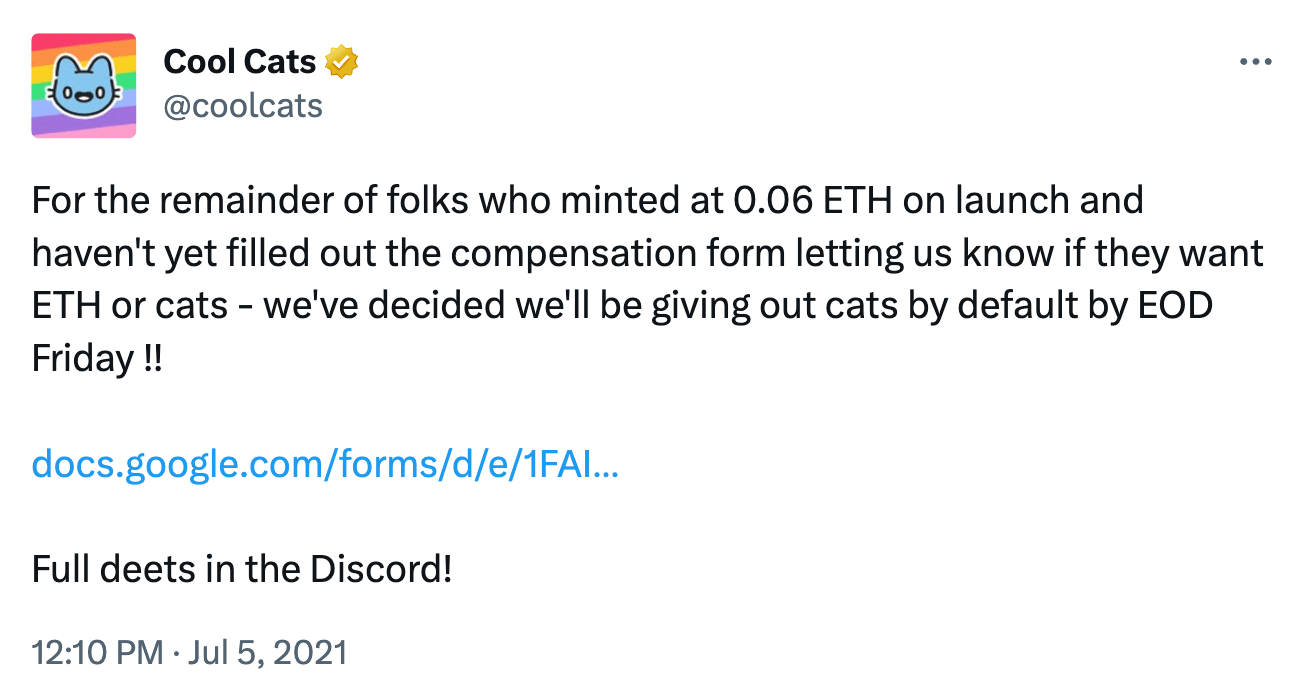
What gave Cool Cats its traction? Evan attributes it to two things.
First, people connected with Clon's story and his continued development of the Blue Cat character throughout his career as an artist. People recognized the art on the NFTs as the embodiment of someone's life work.
Second, the crypto space as a whole had not historically been welcoming to cute or cool. Cool Cats emerged with the idea that something could be on the blockchain and be cute and that the people involved with that idea could be nice to each other.
It was an easy concept to fall in love with, making it very sticky.
Turning Cool Cats Into a Viable Business
The Cool Cats team realized they were creating something no one would buy, so they were careful not to spend too much time preemptively planning what they would do if the project sold out.
After minting out, the Discord was filling up with new holders, and the team realized it was time to face the challenge of answering what came next?
Today, the term roadmap is well-known in the context of NFT projects. But in 2021? Not so much.
The project entered an incubation period during which the team took product suggestions from the Cool Cats community and balanced those suggestions with the team's own branding and marketing experience to ensure market fit and one point of clarity: the team wouldn't put Blue Cat on anything they weren't passionate about themselves.
During the process, rather than continuing to handle everything themselves, the team of four realized they needed to hire others into key positions to succeed.
They decided to accept venture capital and used that treasury to bring on a proper team.
Accepting Venture Capital
There's no way to definitively answer whether an NFT project should accept venture funding.
However, venture funding isn't just about the money. It can also be tethered to additional insight and resources. Are you fully qualified to thread the needle and get your project to where it needs to be, or could partnering with a venture team help you avoid pitfalls and get where you want to be more quickly?
For Cool Cats, venture funding was the right move.
It tethered them to a support team with a demonstrated track record of success with projects such as World of Warcraft and other brands that have IPOd, as well as their current CEO, who came from Disney and brought a deep well of connections with him.
Since accepting the venture money, Cool Cats has secured partnerships with Animoca and Futureverse.
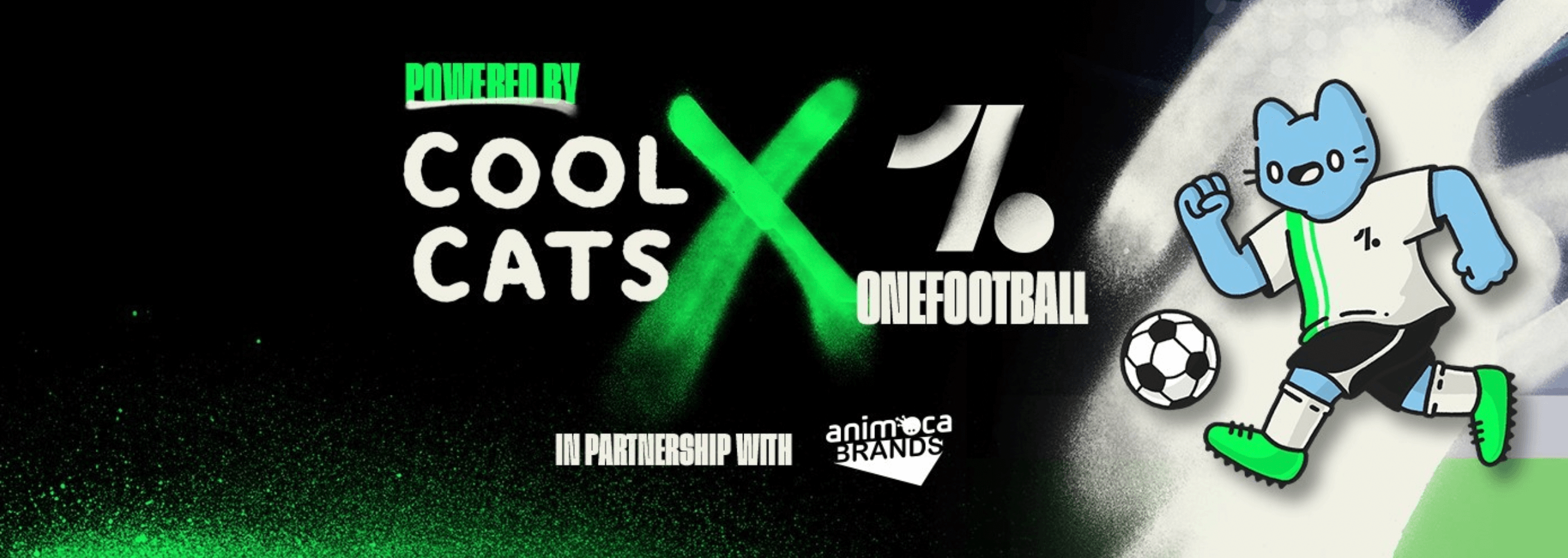
Still, if you have your own funding and are secure in your ability to execute a well-designed bespoke trajectory plan, you do you. Plenty of collections start scrappy, hit all the right moves, and end up being acquired by a large brand like Nike.
Building the Cool Cats Community
The Cool Cats brand is inclusive, accessible, and inviting; it's not exclusive. That ethos is carried through to its community, where anyone can join the Discord server regardless of whether they own a Cool Cat NFT.
The community's growth is 100% grassroots organic and now centers on activities that double as marketing opportunities. For example, the team will give away an NFT as the prize for a contest in which artists compete to make the best Cool Cats-related meme, art, or song.
Today, the community has over 100k members, many of whom are builders, innovators, artists, and collaborators who want to make things that proliferate and celebrate the Cool Cats brand.
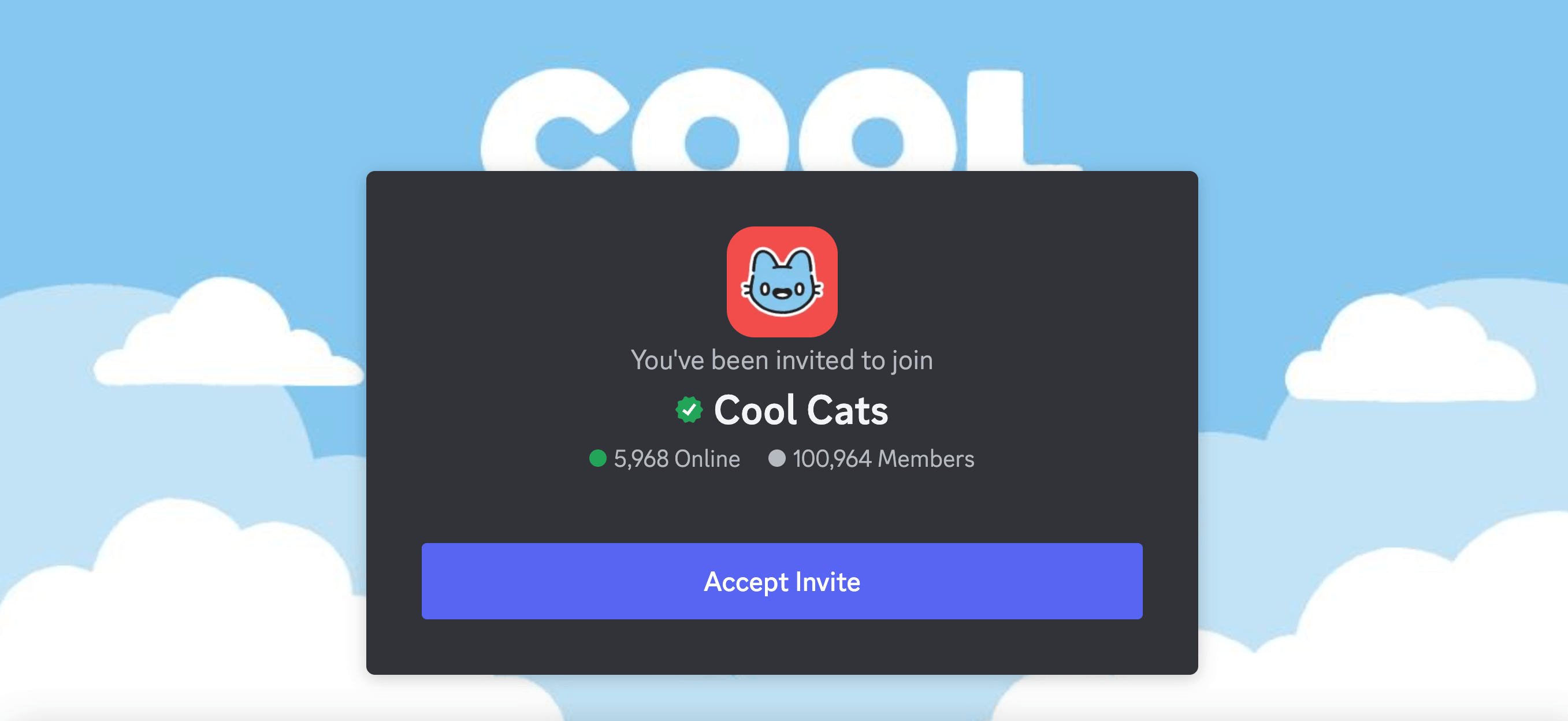
People have developed apps, created fan art, shared pictures of cupcakes featuring their Cool Cat, built custom toys, developed books, and more.
Scaling Beyond Cool Cats
As the Cool Cats brand grows, the team has had to learn to handle increasing and varied expectations. They do this by being as transparent as they possibly can. Still, they've learned some lessons worth sharing.
Consider the rollout of their second NFT drop, Cool Pets. The collection sold out and was successful across many markers, but the team noted areas for improvement that will help improve future initiatives.
For example, hinting to the community what they plan to bring to market before they get too far into the project. This will help the team validate the perceived demand for what they're proposing to build.
Or, if the community looks at the announcement and collectively questions it or downright rejects it, the team can signal to the community that the feedback was noted and that they're moving in a different direction.
The key is to hint at what you're planning. The power of anticipation is one of the best marketing vehicles there is.
Comments
Post a Comment